The 10 most overhyped PC games
Whether or not they succeeded, these games were blown way out of proportion.
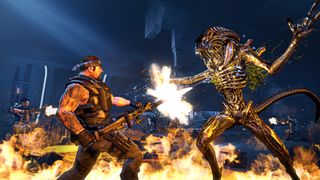
Hype is part of the life cycle of a game. It’s the awkward stage of development when the game isn’t finished but still demands attention. At this point games are like lusty teenagers, clamoring for the approval of potential partners. At the risk of over-sharing my adolescent seduction techniques, every pre-order incentive is a pierced eyebrow, every trailer a scaled lamppost.
Much like high school, some games are sexy and cool enough that they don’t need hype. Others actively eschew it. This list rounds up the games so desperate for your attention they started doing one-armed push ups in the school quadrant. And, just like actual people, some lived up to the hype, some didn’t.
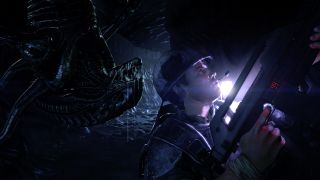
Aliens: Colonial Marines
What a great idea. A shadowy FPS that brings us full circle, referencing all the cool things that Aliens gave to shooting games. A great trailer helped build momentum, showing off steamy abandoned corridors and gnawing xenomorph menace. Early versions of the game set it between Aliens and Alien 3, giving it true cinematic heritage.
The finished game was so far removed from the initial reveal that a class action lawsuit was brought against SEGA. The plaintiffs have since dropped Gearbox from the suit, and it’s no longer a class action, but the point is clear: Aliens: Colonial Marines was disappointing enough for people to spend their own money suing SEGA.
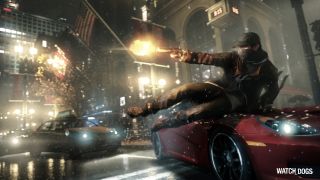
Watch Dogs
There are a couple of Ubi titles that could be on this list—and at least two Assassin’s Creed games—but Watch Dogs is snake oil in digital form. The initial reveal stole E3 in 2012, showing a game which almost too good to be true. And by ‘almost’, I mean ‘absolutely, obviously, outrageously’.
Many of us bought it, though. We believed the immersive world, integrated multiplayer and staggering graphics. Even after lengthy delays, there was hope. When Watch Dogs finally arrived, it wasn't awful, but it was a more linear, ordinary experience than all but the most cynical gamer would have expected.

Crysis
Crysis was a reason to upgrade to a more powerful machine. A benchmarking game, that showed off the bleeding edge technology achievable on PC. Tired video cards filled every recycling bin, ripped out and replaced on the guarantee of gaming’s greatest foliage. What a time to be alive.
How could a game demanding enough to actually kill your PC live up to the hype? With great difficulty. Unlike other overhyped games it was exactly as pretty as promised, and the opening hours are incredible, but it wasn’t the transformative shooter some hoped it would be. Still, though: those fronds. Holy shit.
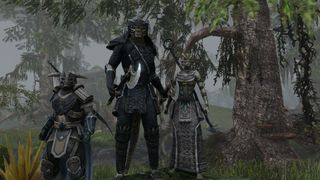
The Elder Scrolls Online
There was plenty of reason to be excited about Elder Scrolls Online. The idea of exploring all of Tamriel was hugely enticing. Director Matt Firor has serious MMO heritage, having worked on games such as Dark Age of Camelot, which helped define the genre. And then there were those cinematic trailers, which showed sweeping, high-fantasy battles and crackling magic.
For ease, people had started describing Elder Scrolls Online as a ‘Skyrim MMO’, suggesting the same sandbox gameplay would be present. It was obvious from the opening moments this wasn’t the case. We’re accustomed to Tamriel being a fascinating place because you can go anywhere and do anything, and at launch, the Elder Scrolls Online didn’t come close to delivering on that promise.
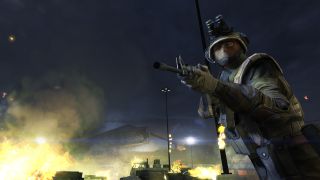
Homefront
Like a some other games on this list, the hype for Homefront originated from it challenging another big-budget title. In this case, it was Call of Duty. With THQ clawing at the lucrative shooter market, they threw every penny they had at Homefront. The game’s red star and clumsy message was splattered across every games mag. When it looked like the game might be delayed, THQ’s VP of Core Games and cross-media menhir Danny Bilson assured the press that developer Kaos Studios was working seven-day weeks to get it finished.
Add an uneasy story about the Korean occupation of the US, written in part by John Milius, and Homefront became the definition of a doomed, middling shooter. A 60-day crunch period couldn’t deliver the game that was promised, THQ suffered a 26% stock drop on release, and Kaos Studios sadly closed as a result.
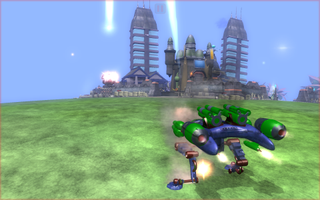
Spore
Yes, there was a time when we got excited about a game called Spore. Spore! It was designed by SimCity creator and don’t-confuse-him-with-Wesley-Crusher developer Will Wright, and was a hugely ambitious project. And I mean ambitious in the sense that we expected a game about creating life and seeing it develop into a complex civilizations, not just ‘the guns are really good’.
The reception was generally good. Some believed Spore would change the way we think about games. Other thought it was merely a collection of amusing distractions. Whatever the critical appraisal, the actual product could never live up to the bravado.
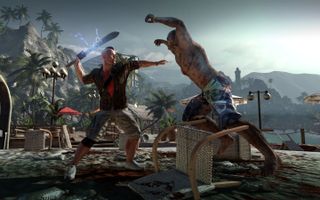
Dead Island
Dead Island’s biggest mistake (or success) was accidentally making the best game trailer of all time. Before then, we’d seen grubby screenshots and heard developers talk about body part-specific zombie damage. It all seemed ordinary. But then that trailer hit, with its brilliant music, doomed family, and clever, time-hopping cinematography, and we began to wonder: maybe this won’t just be another average zombie game?
We were right, in a small way. It was a less-than average zombie game. Instead of a title that explored the human cost of the undead apocalypse, we got a wobbly-if-endearing curio, marred by ghastly Aussie accents and technical hiccups.

Driv3r
Imagine being hopeful about a game that replaced a letter with a number. Imagine being excited by anything that did that. The hubris of man. Driv3r’s marketing campaign was relentless and aggressive, setting the third game up as a definitive GTA-beater. Ridley Scott filmed three promotional shorts. Michael Madsen voiced a making-of doc. It was a huge, big-budget undertaking. And it was terrible.
The on-foot sections of the game simply didn’t work, it was full of glitches, and the thoughtless swipes at Rockstar felt timid and self-defeating, like a resentful unpopular kid shitting in the school president’s rucksack. It says plenty that the excellent Driver: San Francisco—a game about ghost-jumping between vehicles—did so much to repair the prestige of series.
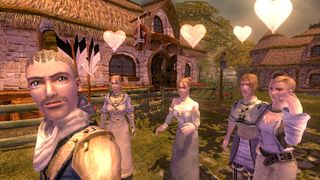
Fable
Oh Peter, you wonderful wizard of deceit. Like a long-fingered warlock in a curiosity shop, you promised us things we didn’t even know we wanted, and for six happy months the world was bright with hope. But it was bollocks. Outrageous, hucksterish bollocks.
What’s cruel and unusual about the Fable hype is how weirdly specific it was. There were no bland platitudes about it being 'visceral'. No guff about sweeping story. Instead, we were promised delicate details that bring a fantasy world to life. Real-time fern growth! Initials carved into trees! Acorns growing into oaks! What we actually got was a cheerful fantasy adventure with few of the expected flourishes. It wasn’t bad, but everybody knows fart jokes are an unworthy substitute for high fantasy horticulture.
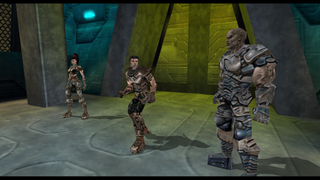
Daikatana
John Romero has done many great things—including the gift of the single greatest image in the history of time—but Daikatana is not one of them. Few games have received such undeserved hype. It was promoted as the creation of a Ferrari-racing, rockstar developer, with Time magazine famously saying, "everything that game designer John Romero touches turns to gore and gold."
Daikatana, however, didn’t turn into either of those things. It was garbage juice.
Romero believed the huge project could be completed by eight artists in just seven months, with Daikatana was intended for release in December 1997. It arrived almost three years late, after high-profile development spats and horribly misjudged advertisements. Romero has since apologised, even releasing the source code to the community to improve, but it’s too late. Daikatana defined disappointment for an entire generation of gamers.

Most Popular

